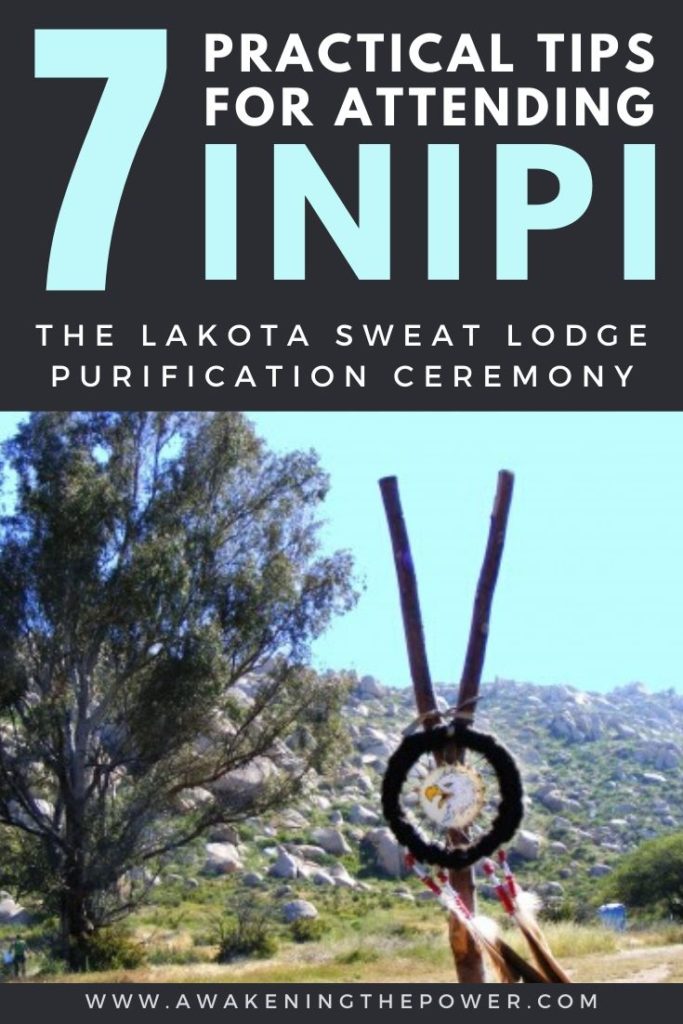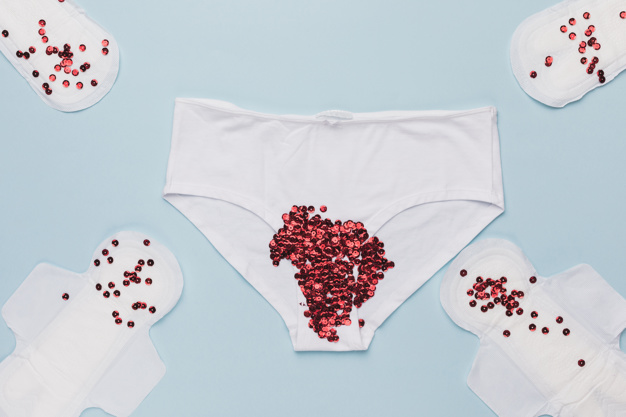Are you curious about attending a Native American sweat lodge ceremony? Here is my experience of the Inipi — the sweat lodge of the Lakota people, and some helpful tips for someone who wants to participate in this powerful healing tradition.
The Ceremony
The women go in first, then the men, then the fire keepers.
Traditionally, sweat lodge ceremonies of the Lakota people (Inipi) are only for men, but today half of the participants are female, including me, which I consider progress.
The first 7 stones are placed in the center of the lodge, the door closes tightly, and the First Round of the Inipi begins. Everyone sits in a circle around the hot stones. The number of stones increases as the ceremony goes on. By the time it’s Round Three, it feels like I’m inhaling fire.
It has gotten so hot that the only way I can breathe is through a towel.
The medicine man sings prayers in Lakota language and splashes water over the pile of hot stones. The water evaporates instantly, and new waves of heat overwhelm all senses.
Some people around me are screaming, crying or chanting, but I can’t see them. The darkness blots out everything.
The smoke from the burning sage and the steam from the stones make the air thick, heavy and nauseating. Something is crawling up my leg. I don’t know how much longer I can last.

The Paranoia
My torrid brain keeps reminding me of the medical conditions associated with prolonged heat exposure – nausea, headache, increased respiration, delirium… My God, I think I have all of them.
Then it gets existential: my mortality is suddenly both real and terrifying. For a second there I’m thinking: this may be it… my last moments…
I’m going to have a heart attack (or worse – pass out) right here in this pitch-black hut with 15 strangers, and no one will even notice.
My paranoia isn’t entirely unfounded: a few years back three people died in an Arizona sweat lodge ceremony conducted by another new age guru with “the secret”: spirituality as a financial strategy.
Participants paid 10 thousand dollars to go on a retreat, at the end of which they were packed into a waist-high hut until they started gasping for air and showed other signs of serious physical distress.

At least I know I’m getting the real deal — an authentic Lakota spiritual guide named Hawk Moon.
Moon is a jovial silver-haired man with a loud rumbling laughter. He is a force. He leads the ceremony with a steady experienced hand, and I feel I can trust him. Before we begin he says:
“There will be times when you’ll feel you can’t go on. If that is the case, you can leave the lodge at any time, but I encourage you to stay and breathe through the heat. The more heat you feel, the more impurities you are burning away.”
The Turning Point
On the verge of being defeated by the heat, I remember Moon’s words and concentrate on the breathing, and nothing else. I let the heat in, I’m not fighting it anymore.
Soon my fears and discomfort somehow become hazy, abstract, insignificant… I observe myself and everyone inside the lodge as if from a distance.
As I breathe in the hot air, I imagine it burning away all the impurities in my body. I exhale slowly, and I let go.
The darkness, frightening at first, becomes a soothing warm blanket covering my naked soul. People screaming and crying don’t bother me anymore: they are letting their pain out, and it is beautiful.
Suddenly I’m crying too. The sorrow that lived inside me burst like a water-filled balloon, and I’m allowing myself to feel the pain.

The Rounds
Although there is no uniform sweat lodge ritual, the whole process is modeled after the Native American Medicine Wheel, which represents the archetypal journey each of us takes in life. This journey has four stages or rounds, each associated with a cardinal direction and a color.
- Round One (East, Yellow) is of mild intensity, and is for getting used to the heat, the darkness, the enclosed space and anything else that might take some getting used to. Associated with the Visionary archetype: the path of the highest good.
- Round Two (South, Red) is moderately hot, and is about “the others”: people, relationships and unresolved conflicts. The idea is that you are willing to care for someone else before you care for yourself. Associated with the Teacher archetype: helping others to reach their full potential.
- Round Three (West, Black) is for forgiving, embracing and nurturing your inner Self, and is the hottest round of all four. In many ways it is the toughest round: not only temperature-wise, but for the way we tend to avoid our own demons. Associated with the Healer archetype: ability to manifest healing for oneself and/or others.
- Round Four (North, White) is dedicated entirely to that evasive “I’m glad to be alive” feeling and giving thanks: to the Earth Mother, the Universe, and the spirits of ancestors. Associated with the Warrior archetype: strength of spirit, taking control of one’s life.

The Symbolism
The sweat lodge symbolizes a mother’s womb, or the Universe.
We humbly enter the lodge on our knees, and by entering it, we are allowing ourselves to become vulnerable and open like a child. Because only by becoming open again can we let go of emotional traumas, fears and self-inflicted limitations.
Upon exiting the lodge we kneel again, thanking the Earth Mother and the medicine man for the healing.
The idea of rebirth is essential to the sweat lodge tradition. In fact, the word “Inipi” literally means “to live again.” To go through an intense spiritual purification is to transform oneself.
As you exit the lodge, you let an old self die so it can be reborn. After all, what is death if not transformation? In the words of Cornel West,
“It’s precisely by learning how to die, examining yourself and transforming your old self into a better self, that you actually live more intensely and critically and abundantly.“

After the Sweat Lodge Ceremony
As the brightest of you have deduced, I’ve made it out alive. Yet some sort of death did occur because I felt different.
As I crawled out of the lodge, I felt an incredible sense of freedom and lightness, like I’ve lost a couple hundred pounds.
After the darkness, the harsh heat and the purging my eyes opened to the sight of smoky-blue mountains of Southern California. I saw the sun setting below, and heard the sound of ravens croaking in the distance. Early evening air felt exhilarating.

“You look so much clearer,” someone says to me almost immediately. I say “thank you” and wonder what the hell I looked like before. But I feel clearer.
After the ceremony everyone is hugging each other as is – in sweat-drenched clothes, with towels hung around the necks and smudged dirt on smiling faces. Lots of smiling and hugging, which is a sharp contrast to a group of random strangers I’ve met with in the morning.
Hawk Moon instructs us to greet one another as if meeting for the first time, since we are different people now.
It sounds odd but it made complete sense, and it strengthened the impression that we emerged from the lodge much like a newborn emerges from a mother’s womb. We were transformed and reborn.
Out of the darkness came the new beginning, and without a doubt, we all felt a little closer to the Spirit that dwells within each of us.
Want to experience Inipi for yourself? Here are some things to keep in mind before embarking on this deeply healing journey.
7 Tips for Attending a Lakota Sweat Lodge Ceremony
#1: Water
Make sure to drink plenty of water before and after the ceremony to avoid severe dehydration and aid the detoxification process.
That’s a must. A sweat lodge not only dehydrates you because of the extreme heat. It also triggers a detox. So you need lots of water both before the ceremony, and for several days after.
#2: Guide
Choose Your Sweat Lodge Guide Wisely.
The Inipi ceremony is safe when done properly. However, with an unqualified guide it can be dangerous. Try to find an authentic Native American guide with a deep connection to his or her roots. A good indication that you’ve found the right person is that they won’t charge for the ceremony. However, it’s good etiquette to offer a donation or a gift.
#3: Cleanse
Don’t use drugs or alcohol for at least a week before the sweat lodge.
Inipi is a sacred ceremony that will be more powerful if you enter it with a pure body and a clear mind. The same can be said about any spiritual healing ritual. To participate in an authentic ayahuasca ceremony, for example, you would need to abstain from alcohol, drugs and meat for at least 2 weeks.
Tip #4: Clothes
Wear light, natural fabrics.
Leave jewelry, contact lenses and synthetic clothing at home. The heat will cause these items to melt or burn. Wear something light and simple; something you don’t mind being drenched in sweat.
Tip #5: Let Go
This tip if for when you’re inside the sweat lodge, going through the rounds. It can get pretty intense in there. You might want to scream, cry or express your emotions some other way.
Go for it. Don’t be afraid of looking silly. Feel whatever comes up to the surface.
Allow the Spirit to take over.
Tip #6: Remember
Look around before entering the lodge.
Take a moment and look around to remember what the world looked like before. After the ceremony you won’t see it the same way.
Tip #7: Gratitude
Bring organic tobacco or another offering as a gesture of gratitude for the experience.
Tobacco is a traditional gift typically given to the Medicine Man/guide before or during the ceremony to be smoked after.
Depending on the lodge you’re attending, you might also be asked to make a small donation, and/or bring some food for the potluck.
Have you ever attended a sweat lodge ceremony? Share your experience below!





